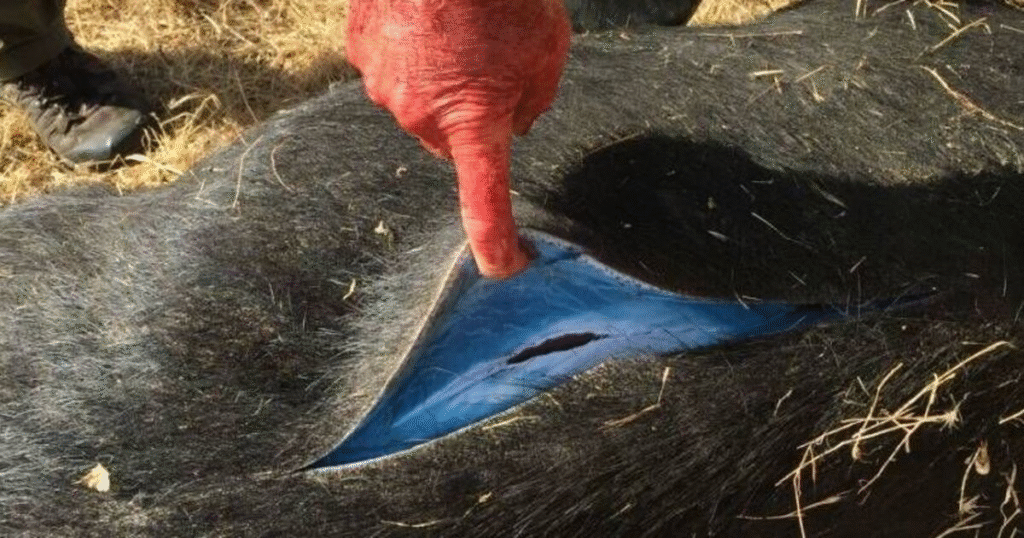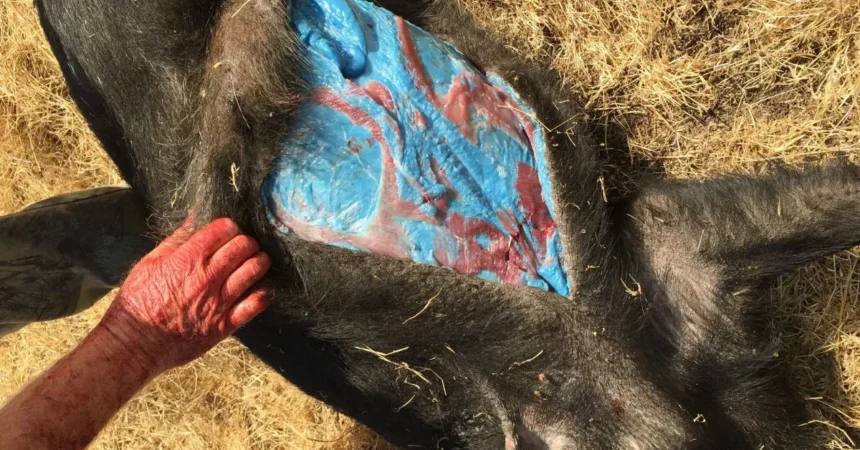Wild Pigs in Monterey County Turn Electric Blue After Eating Rodenticide, Sparking Health Alarms
Wild pigs roaming Monterey County, California, have developed an alarming electric blue color in their muscle and fat tissues, a phenomenon confirmed in early 2025 by wildlife experts and hunters. The transformation was traced to ingestion of diphacinone, a blue-dyed anticoagulant rodenticide commonly used to control ground squirrels and other pests on agricultural properties.
Dan Burton, a wildlife control specialist, first discovered neon blue “slushie-like” fat and tissue in freshly culled pigs on a ranch along the Salinas River. “I’m not talking about a little blue, I’m talking about neon blue, blueberry blue,” said Burton. His alarm led to an official investigation by the California Department of Fish and Wildlife (CDFW), which confirmed diphacinone contamination through laboratory testing of pig liver and stomach samples.
Although designed to be lethal for smaller pests, feral pigs—often weighing 100-200lbs—were able to break into bait containers and consume quantities not immediately fatal, resulting in extended exposure and accumulation of the rodenticide in their bodies. The pigs appeared healthy outwardly, complicating detection for hunters and ranchers.
“This blue tissue is a stark warning for hunters and anyone consuming wild game,” said Dr. Ryan Bourbour, Pesticide Investigations Coordinator at CDFW. Both CDFW and health officials warn that cooking does not eliminate diphacinone; consuming contaminated meat poses health risks including severe bleeding, abdominal pain, dizziness, and even potentially fatal outcomes. Previous studies found traces of rodenticide in about 8.3% of wild pigs tested near agricultural sites in California.

Diphacinone is officially restricted across California since 2024, only allowed for certified pest control professionals or agencies. However, enforcement challenges and agricultural demand mean risks remain for non-target wildlife—classic “collateral damage” in the state’s pest management efforts.
The recurrence of blue pigs is not merely a regional curiosity but spotlights broader concerns about pesticide use near sensitive wildlife habitats. Authorities have pulled contaminated squirrel traps and are urging landowners, hunters, and meat consumers to exercise vigilance.
Conclusion: Implications and Next Steps
The case of Monterey’s blue wild pigs exposes a hidden danger in California’s rural pest control practices. Wildlife managers advocate stricter oversight of rodenticide deployment and enhanced education for ranchers and hunters. As diphacinone remains a threat to more than just rodents, the incident may prompt a reevaluation of chemical controls—and greater care in protecting California’s diverse and iconic wildlife.







